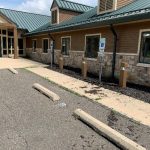Project at a Glance
- Whitman provided full engineering design services for the installation of four hyperbaric chambers at The Kane Wound Care Center in Princeton, NJ.
- This project was unique for Whitman because it was the first time we had to design MEPF systems for a hyperbaric chamber.
- The project design was submitted in December 2016, approved in January 2017, and completed in the fall of 2017.
Key Words
Hyperbaric chamber, civil engineering, electrical engineering, plumbing engineering, fire protection engineering, mechanical engineering, MEPF, due diligence, Kane Wound Care Center, Princeton
Overview
Whitman entered a new area of design in 2016 with the provision of engineering services to retrofit an existing doctor’s office to include four hyperbaric chambers, used for a wide variety of medical treatments.
Whitman’s Environmental Division initially completed the due diligence portion of the project and aided the client in acquiring the property. Whitman’s Engineering Division was responsible for: civil engineering services related to the site building, water utility service and developing the site plan; electrical design of the stand-by emergency generator, the proposed equipment power and new lighting; plumbing design for new bathrooms, as well as new domestic water (hot and cold, including hot water generation), sanitary and vent piping for the exam room sinks; designing a new fire protection system which included a water mist system and water storage tank for the protection of the hyperbaric chambers; and mechanical design for the supply-and-return branch ductwork for the proposed spaces to meet healthcare requirements.
Whitman coordinated with a vendor to find a location for the oxygen tanks and provide a piping layout to transfer oxygen from the tanks to the chambers. Whitman also reviewed helipad and bulk oxygen tank requirements due to a helipad on the neighboring property. Constant communication was maintained with the manufacturer to ensure the design complied with applicable codes and safety standards for hyperbaric chambers.
The project design was submitted in December 2016 and approved in January 2017. The project was successfully completed in the fall of 2017.







